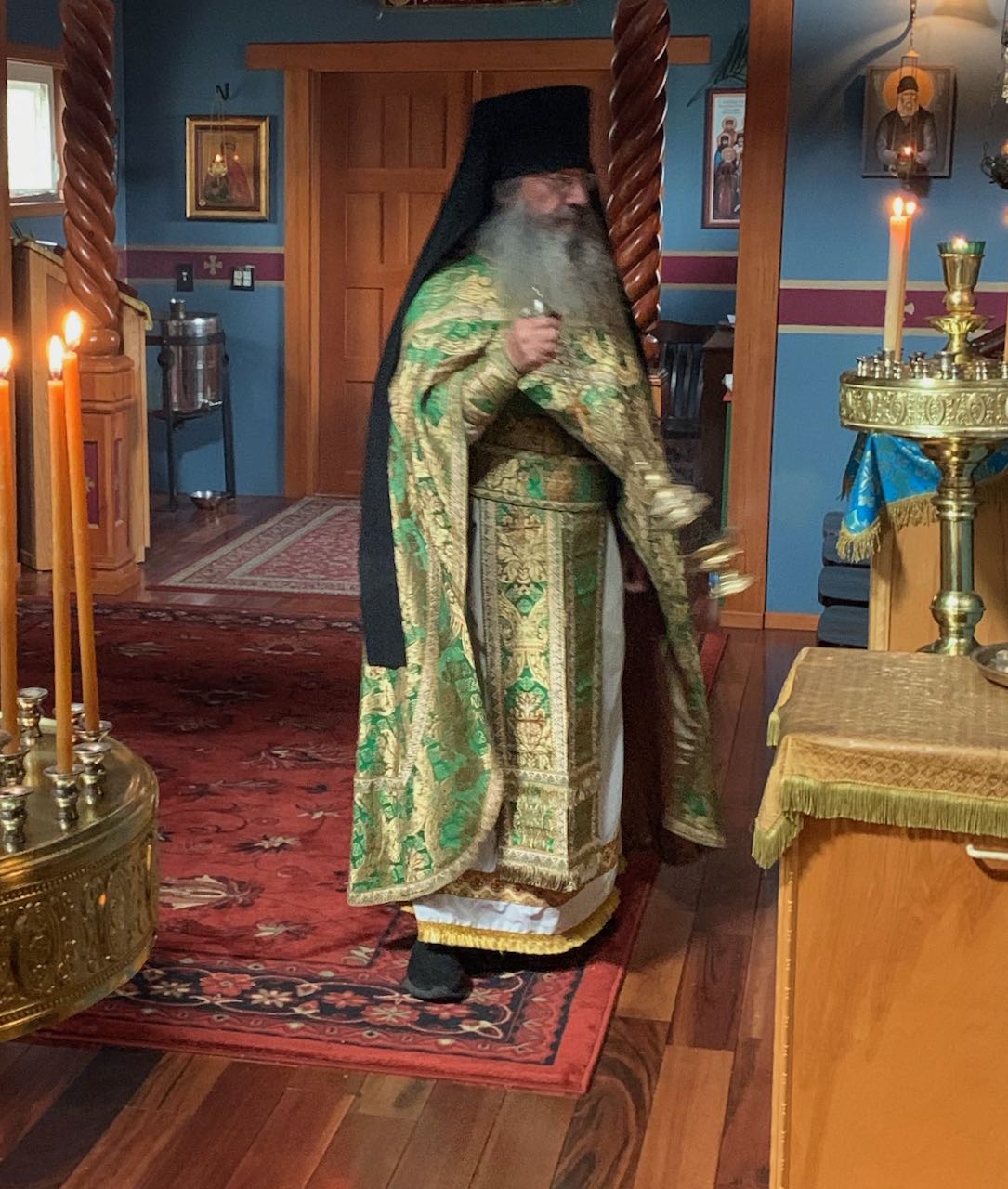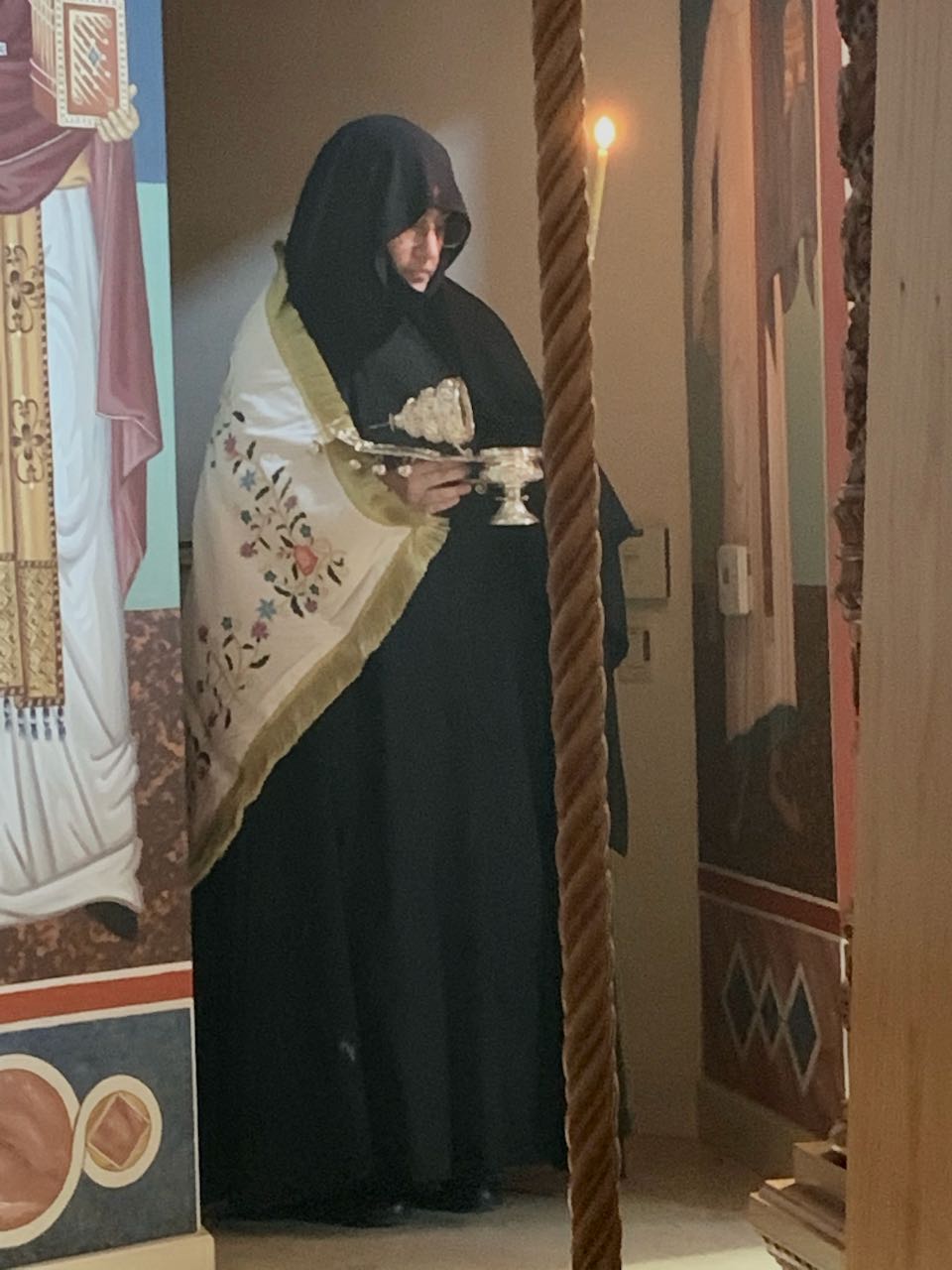Let My Prayer Arise as Incense Before Thee
From Old Testament times believers have burned incense as an offering when worshiping God. The ancient temple in Jerusalem even had priests whose sole duty was to keep the censer burning twenty-four hours a day.
Ancient pagan kings were often escorted with large fans of peacock feathers and burning incense when entering their palaces. Early Christians took both these symbols for their worship in recognition of Christ as their Sovereign King and Lord. To this day the Orthodox Church uses incense in most of her services, and large circular fans, reminiscent of the peacock fans of ancient times, are held over the Gospel book during the proclamation of God’s word during celebrations of the Divine Liturgy.
As a young man attending my very first Orthodox Liturgy, I was struck by the use of incense. The words of the Psalmist King David, “Let my prayer arise as incense before Thee…”, is chanted during every celebration of Vespers during the censing of the temple. During every service where there is a great censing of the whole church, the priest (or deacon) censes the frescoes and icons as windows into eternity, as the incense wafts upward as an offering of the people of God.
The people are also censed by the priest in recognition of their having been created in the image and likeness of their Creator God. Incense is so central in Christian worship that it is even used in the worship of the domestic church, where the family gathers in prayer around their own icons, reading the scriptures together, and offering their family prayers to the Lord.
“Let my prayer arise as incense before Thee (Psalm 141).”
With love in Christ,
Abbot Tryphon
Thursday June 17, 2021 / June 4, 2021
Afterfeast of the Ascension. Tone six.
Venerable David of the Gareji Monastery and Lukiane, Georgia (6th-7th c.) (movable holiday on the Thursday of Holy Ascension).
St. Metrophanes, first patriarch of Constantinople (325).
New Hieromartyr Peter priest (1918).
New Martyrs: Archbishop Andronicus of Perm (1918) and Archbishop Basil of Chernigov (1918).
New Hieromartyr George priest (1941).
Joanikije Lipovac, Metropolitan of Montenegro (1945) (Serbia)
Uncovering of the relics of Hieromartyr Peter, archbishop of Voronezh (1999).
Venerable Methodius, abbot of Peshnosha (1392), disciple of St. Sergius of Radonezh.
Martyrs Frontasius, Severinus, Severian, and Silanus of Gaul (1st c.).
Martyr Concordius of Spoleto (175).
Hieromartyr Astius, bishop of Dyrrachium in Macedonia (110).
Venerable Zosimas of Cilicia, bishop of New Babylon (Egypt) (6th c.).
Hieromartyr Ioannicus, metropolitan of Montenegro and Littoral (1945).
Sts. Mary and Martha, sisters of St. Lazarus (1st c.).
Venerables Eleazar and Nazarius, wonderworkers of Olonets (15th c.).
Venerable Sophia of Thrace (10th-11th c.).
Venerable John, abbot of Monagria near Cyzicus (761).
Venerable Alonius of Scete in Egypt (5th c.).
St. Titus, bishop of Byzantium (3rd c.).
Hieromartyr Apotacius and Martyrs Camarus, Zoticus, Gaddanus, Ninnitus, Julius, Attalus, Eutyches, Amasus, Carinus, Saturninus and 30 others, beheaded at Noviodunum in Scythia Minor (320).
St. Optatus, bishop of Milevum in Numidia (376).
St. Petroc of Cornwall (594) (Celtic & British).
The Scripture Readings
Acts 25:13-19
Paul Before Agrippa
13 And after some days King Agrippa and Bernice came to Caesarea to greet Festus. 14 When they had been there many days, Festus laid Paul’s case before the king, saying: “There is a certain man left a prisoner by Felix, 15 about whom the chief priests and the elders of the Jews informed me, when I was in Jerusalem, asking for a judgment against him. 16 To them I answered, ‘It is not the custom of the Romans to deliver any man to destruction before the accused meets the accusers face to face, and has opportunity to answer for himself concerning the charge against him.’ 17 Therefore when they had come together, without any delay, the next day I sat on the judgment seat and commanded the man to be brought in. 18 When the accusers stood up, they brought no accusation against him of such things as I supposed, 19 but had some questions against him about their own religion and about a certain Jesus, who had died, whom Paul affirmed to be alive.
John 16:23-33
23 “And in that day you will ask Me nothing. Most assuredly, I say to you, whatever you ask the Father in My name He will give you. 24 Until now you have asked nothing in My name. Ask, and you will receive, that your joy may be full.
Jesus Christ Has Overcome the World
25 “These things I have spoken to you in figurative language; but the time is coming when I will no longer speak to you in figurative language, but I will tell you plainly about the Father.26 In that day you will ask in My name, and I do not say to you that I shall pray the Father for you; 27 for the Father Himself loves you, because you have loved Me, and have believed that I came forth from God. 28 I came forth from the Father and have come into the world. Again, I leave the world and go to the Father.”
29 His disciples said to Him, “See, now You are speaking plainly, and using no figure of speech! 30 Now we are sure that You know all things, and have no need that anyone should question You. By this we believe that You came forth from God.”
31 Jesus answered them, “Do you now believe? 32 Indeed the hour is coming, yes, has now come, that you will be scattered, each to his own, and will leave Me alone. And yet I am not alone, because the Father is with Me. 33 These things I have spoken to you, that in Me you may have peace. In the world you will have tribulation; but be of good cheer, I have overcome the world.”



“These things I have spoken to you, that in Me you may have peace. In the world you will have tribulation; but be of good cheer, I have overcome the world.” Important words for today! Thank You, Father!
I use incense in my home during prayer time especially on a Fri or Sat evening. I have heard people say when they arrive at the parish and smell the incense they feel a deep peace – incense and lighting candles.
I noticed the photo you have of the Nun and she is wearing a flat head-covering and not one raised up – does this mean anything – I do like her garb very much!
Please say a prayer for me Abbot, as I am soon to be Prosphornitsa at my parish – just waiting for the Religious Seals to arrive.
Lovely article about incense and I like particularly – “My prayers rise up as incense…..”
God bless & take care!
The nun is one of two chosen by Abbess Markella of Life Giving Spring Monastery in Dunlap, CA. who use hand censers during some of the services. Since they are Greek nuns, they do not wear the klobuk, as do Russian nuns.
Thankyou dear Abbot Tryphon and I do enjoy seeing the Nuns!
God bless….
I instantly recognized the nun who with another nun censes the entire church. I am charged with making sure that the doors to the narthex are opened; what a privilige it is to have a small part in the Divine Liturgy.